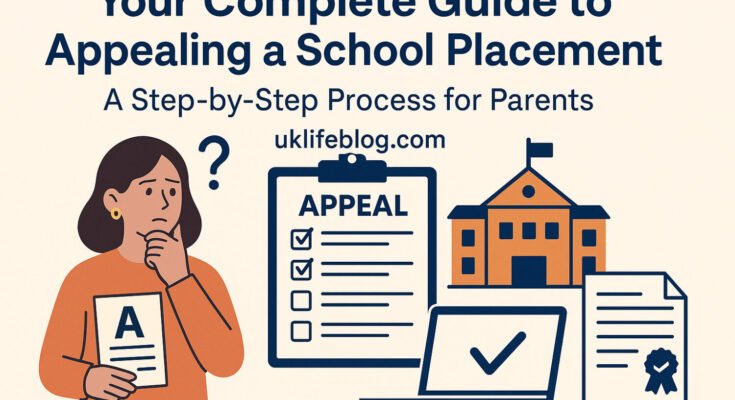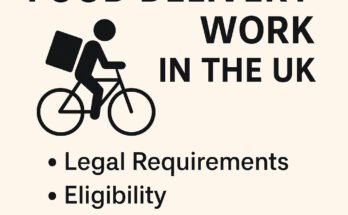Choosing the right school for your child is one of the most important decisions you’ll make as a parent. When a school placement decision doesn’t align with your child’s educational, emotional, or safety needs, initiating a school change appeal may be essential to secure their future. Fortunately, UK law offers a structured process for parents to formally contest such decisions.
This comprehensive guide walks you through every step of the school appeal process – whether you’re challenging an undesired placement after relocation, a preferred school refusal, or inadequate SEN provision. You’ll discover how to build a winning case, master hearing procedures, and access vital templates to advocate effectively for your child’s education.
1. The School Change Appeal Process: Step-by-Step for UK Parents
Legal Foundations
In England, school admissions are governed by the School Admissions Code (2021) and School Standards and Framework Act 1998. Parents have a statutory right to appeal if their child is refused admission to their preferred school. These education appeals are heard by independent panels with legal training.
Valid Grounds for Appeal
Successful school placement appeals typically demonstrate:
- SEN provision gaps at allocated school
- Unmet medical/social needs
- Documented bullying or safety concerns
- Procedural errors in admissions
- Exceptional logistical hardship (e.g., sibling separation)
Weak grounds: Preference for better Ofsted ratings or proximity to friends rarely succeeds.
Timeline Overview
| Step | Timeframe |
|---|---|
| Receive placement decision | March (Primary & Secondary National Offer Day) |
| Submit appeal | Within 20 school days of refusal |
| Receive appeal hearing date | At least 10 school days in advance |
| Appeal hearing | Usually within 40 school days of deadline |
| Receive decision | Within 5 school days of hearing |
2. Preparing Strong Evidence
A successful school change appeal hinges on well-organised, child-focused evidence.
Essential Documentation Checklist
✓ Academic records: Reports, assessments, teacher statements
✓ SEN/medical evidence: EHCP plans, specialist reports, CAMHS letters
✓ Safety concerns: Bullying logs, safeguarding referrals, police reports
✓ Social evidence: Sibling enrollment proof, psychological assessments
✓ Policy references: Catchment maps, oversubscription criteria
3. Writing a Winning Appeal Letter
Your appeal letter is your first chance to explain your child’s unique needs. It should be concise, evidence-based, and child-centred.
Structure Template
[Your Name]
[Your Address]
[Date]
[Admissions Authority/Panel Name]
Subject: School Placement Appeal for [Child’s Name]
1. Introduction
I am writing to formally appeal the decision to refuse my child, [Child’s Full Name], a place at [Preferred School Name].
2. Summary of the Decision
On [Date], we were informed that [Child’s Name] was not offered a place at [School Name] for the [Year Group] entry in [Month/Year].
3. Grounds for Appeal
Our appeal is based on the following:
- [Child] has [medical/SEN/social] needs supported by [evidence source].
- The offered school lacks the necessary [support staff, resources, or environment].
- [Preferred School] is better equipped to meet [Child]’s needs due to [reason].
4. Supporting Evidence
- CAMHS letter dated [xx/xx/xx] stating need for stable environment
- EHCP confirming support not available at the allocated school
- Sibling currently attending the preferred school
5. Conclusion and Request
We respectfully request that the panel consider this appeal in light of [Child]’s best interests and the compelling evidence provided.
Yours faithfully,
[Your Name]Tips for Tone and Clarity
- Keep emotions in check—focus on facts
- Use bullet points to improve readability
- Stick to 2 pages max, with referenced attachments
- Proofread or ask a friend to review
4. The Appeal Hearing: What to Expect
Who Will Be There?
- Independent Panel Members (usually 3)
- Clerk
- Admissions Authority Representative
- You (the Parent/Guardian)
- Witnesses or Advocates (optional)
Structure of the Hearing
- Introductions and process explanation
- Admissions authority presents their case
- You question the authority
- You present your appeal (5–10 minutes)
- Panel questions you
- Final statements from both sides
Best Practices for Presentation
- Be calm and child-focused
- Bring a written script for clarity
- Rehearse your main points
- Have a file with labelled sections for your evidence
Handling Questions from the Panel
- Listen carefully before responding
- Clarify, don’t argue
- Bring answers back to your child’s needs
- Avoid blaming the authority—focus on facts
Virtual Hearings (Post-COVID Consideration)
- Ensure stable internet and quiet space
- Use a headset
- Have documents printed or arranged in screen tabs
5. Decision Outcomes and Next Steps if Rejected
Possible Outcomes
- Appeal Upheld: Your child gets a place
- Appeal Dismissed: Placement remains as offered
- Conditional Outcome: Temporary or waitlisted placement
If Your Appeal Is Rejected
- Request written reasons
- Consider escalation:
- Local Government Ombudsman
- Judicial Review (consult solicitor)
- Explore alternatives:
- Waiting list placement
- Home education
- Appeal again in subsequent years
- Apply to other schools
Case Example: Jayden, Year 5 Transfer
Jayden’s appeal was initially denied. However, his parents escalated the issue to the Ombudsman, citing that the panel ignored their submitted CAMHS report. The process was reopened, and the appeal was eventually granted.
6. Pro Tips for Appeal Success
Actionable Success Tips
- Start early
- Label and reference all evidence clearly
- Highlight child’s voice
- Know your rights
- Practice your pitch
- Use visuals
- Seek support
Common Mistakes to Avoid
- Appealing with only a general preference
- Ignoring the admissions criteria
- Being too emotional or aggressive
- Missing the submission deadline
- Overloading the panel with irrelevant attachments
Resources and Tools
- UK Government – School Admission Appeals
📎 https://www.gov.uk/school-admission-appeals
Explains how to appeal, what to expect, and the legal rights of parents in England.
The School Admissions Code (Statutory Guidance)
📎 https://www.gov.uk/government/publications/school-admissions-code–2
Core legal framework guiding appeals and admissions.
Local Government Ombudsman (LGO) – School Admissions and Appeals
📎 https://www.lgo.org.uk/for-advisers/education/school-admissions
Useful for understanding escalation after a failed appeal.
✅ SEN and Legal Support Organisations
SENDIASS (Special Educational Needs and Disabilities Information Advice and Support Services)
📎 https://councilfordisabledchildren.org.uk/information-advice/sendiass
Offers local, free advice for families of children with SEN.
IPSEA (Independent Provider of Special Education Advice)
📎 https://www.ipsea.org.uk
Legal advice and template letters for SEN-related appeals and EHCP issues.
ACE Education (Advisory Centre for Education)
📎 https://www.ace-ed.org.uk
Parent guides on admissions, exclusions, and appeals.
✅ Parent Support Forums & Tools
Mumsnet Education Forum – School Appeals Board
📎 https://www.mumsnet.com/talk/education
Real-life discussions and tips from other parents who have appealed.
Netmums – School Appeals Advice
📎 https://www.netmums.com/education/school-admission-appeals
Simplified overviews and community advice. - Download: School Change Appeal Letter Template (Editable Word)
- Checklist: What to Prepare Before Your Hearing
- Glossary
- EHCP – Education, Health and Care Plan
- CAMHS – Child and Adolescent Mental Health Services
- SENDIASS – Special Educational Needs and Disabilities Information Advice and Support Services
- LGO – Local Government Ombudsman
Conclusion
Navigating a school change appeal is no small feat. But with proper planning, clear evidence, and a focused, compassionate case, you can greatly improve your chances of success.
Always remember: you are not just challenging a decision—you’re advocating for your child’s future. Stay organised, stay calm, and never hesitate to seek guidance or support. Your voice matters, and persistence is often the key to change.
Read more here




